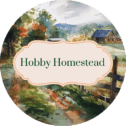Let’s delve into 17 types of mushrooms, exploring their flavors, textures, and culinary uses across various cuisines. Exploring the vast array of mushrooms available is like uncovering nature’s hidden treasures.
From the robust meatiness of shiitake mushrooms to the delicate earthiness of porcini, each variety brings its own unique charm to the table.
Navigating the aisles of local grocery stores or bustling farmers markets, you’ll encounter everything from the familiar white button mushroom to exotic finds like lion’s mane and maitake. These mushrooms not only diversify our plates but also offer a myriad of health benefits, from boosting immune function to supporting cognitive health—a true testament to their culinary and medicinal versatility.

We Love Mushrooms!
Mushrooms hold a special place in our culinary adventures. Whether it’s their earthy aroma that fills the kitchen or their versatile flavors that elevate any dish, we simply adore them.
For me, there’s nothing quite like the sizzle of fresh mushrooms in a hot pan, the perfect complement to a juicy steak. My whole family looks forward to restaurant meals made right at home and that often include mushrooms.
It’s a ritual that combines simplicity with savory delight, making every meal feel like a gourmet experience.
Join us as we take a closer look at these fascinating fungi, discovering the best ways to select, prepare, and enjoy them in dishes that range from traditional Italian pasta to modern meat substitutes.
Get ready to elevate your cooking with these incredible mushrooms. Each one is a testament to the rich diversity found in nature’s pantry.
Table of contents
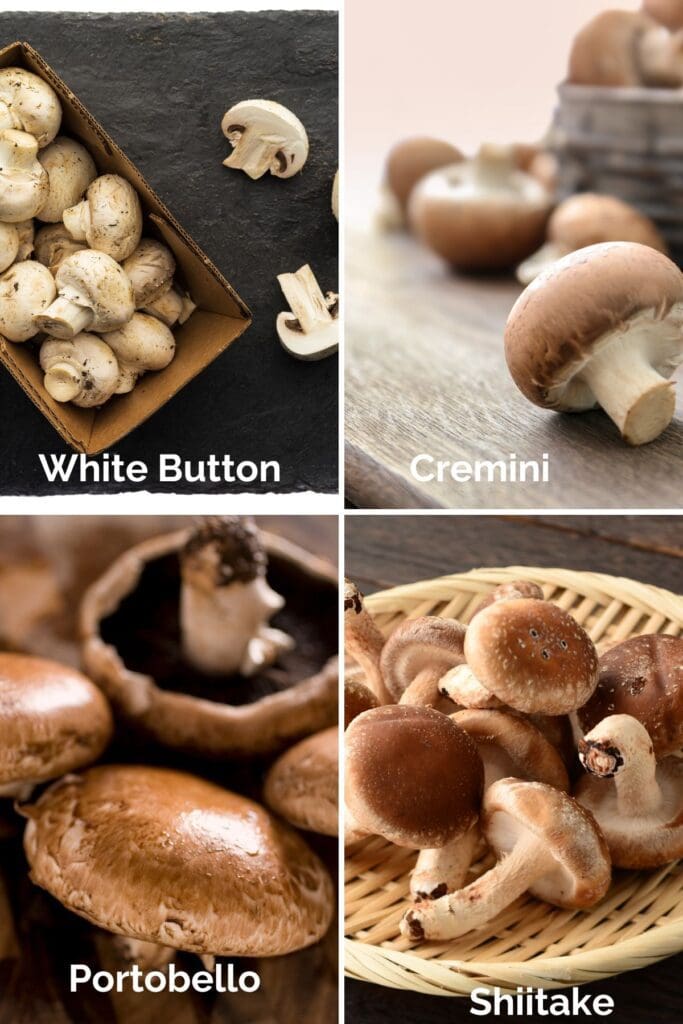
17 Types of Mushrooms
1. White Button Mushrooms (Agaricus bisporus)
The most popular and widely recognized mushroom in grocery stores across the United States, white button mushrooms are a staple in many kitchens. Their mild flavor and delicate texture make them incredibly versatile. Whether sautéed in olive oil, tossed into pasta dishes, or featured in salads, these mushrooms are the perfect entry point into the world of fungi. They’re a great addition to any dish, offering a subtle umami flavor that complements both vegetarian and meat-based recipes.
2. Cremini Mushrooms (Baby Bella Mushrooms)
Cremini mushrooms are also known as baby bella mushrooms. They are essentially a more mature version of the white button mushroom. With a firmer texture and a richer, more savory flavor, they hold up well in heartier dishes like stews and casseroles.
Their brown caps and meaty texture make them a great substitute for meat in plant-based dishes. They’re often used as a base for mushroom recipes that require a little more depth of flavor.
3. Portobello Mushrooms
Portobello mushrooms are simply fully grown creminis. With large caps and a firm texture, portobellos are often grilled or roasted to serve as a meat substitute, especially in burgers.
Their deep, earthy flavor makes them a fantastic option for those looking for a hearty, satisfying alternative to beef. You can marinate them in olive oil and balsamic vinegar for a burst of rich flavor before grilling.
4. Shiitake Mushrooms
Shiitake mushrooms are a cornerstone of East Asian cuisine, known for their rich, savory flavor and meaty texture.
Found in most grocery stores, they work well in stir-fries, soups, and pasta dishes. Their health benefits are well-documented, including their potential to support immune system function. When cooking, remove the tough stems and focus on the tender caps, which absorb flavor beautifully in both fresh and dried forms.
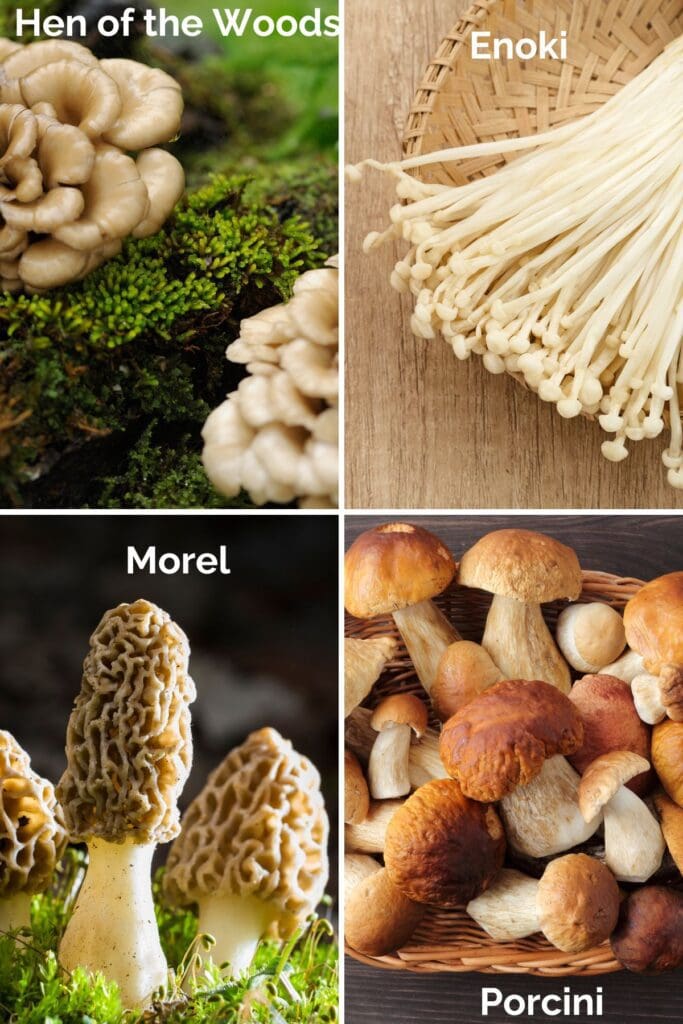
5. Maitake Mushrooms (Hen of the Woods)
Maitake mushrooms, sometimes called “dancing mushrooms” in Japan, are known for their firm texture and nutty flavor.
These mushrooms grow at the base of trees, particularly beech trees, and are prized in both culinary and medicinal traditions. They’re great in a variety of dishes, including soups and stir-fries, and their texture holds up well in high-heat cooking.
6. Enoki Mushrooms
With long stems and delicate caps, enoki mushrooms have a crunchy texture and a mild flavor. Making them a unique addition to soups, salads, and ramen bowls. Popular in Asian cuisine, enokis provide a fun, textural contrast in dishes that are otherwise soft or creamy.
A little olive oil and cold water rinse can prepare them for any dish, but their delicate flavor shines best when lightly cooked.
7. Morel Mushrooms
A gourmet mushroom with a honeycomb-like appearance, morels are highly sought after for their rich, nutty flavor and firm texture. They’re often found in North America during the late summer and are a prized find in farmers markets.
Due to their earthy flavor, they are best cooked simply. Often sautéed in butter to enhance their natural taste. Fun fact: morel mushrooms are notoriously difficult to cultivate, making them a delicacy when found fresh.
8. Porcini Mushrooms
Porcini mushrooms, also known as “penny buns,” are highly prized in Italian cuisine. They have a robust, earthy flavor and a slightly nutty taste.
Often found dried, porcini mushrooms are rehydrated and added to soups, risottos, and pasta dishes. Their rich flavor makes them a staple in gourmet kitchens, especially when combined with ingredients like olive oil and fresh herbs.
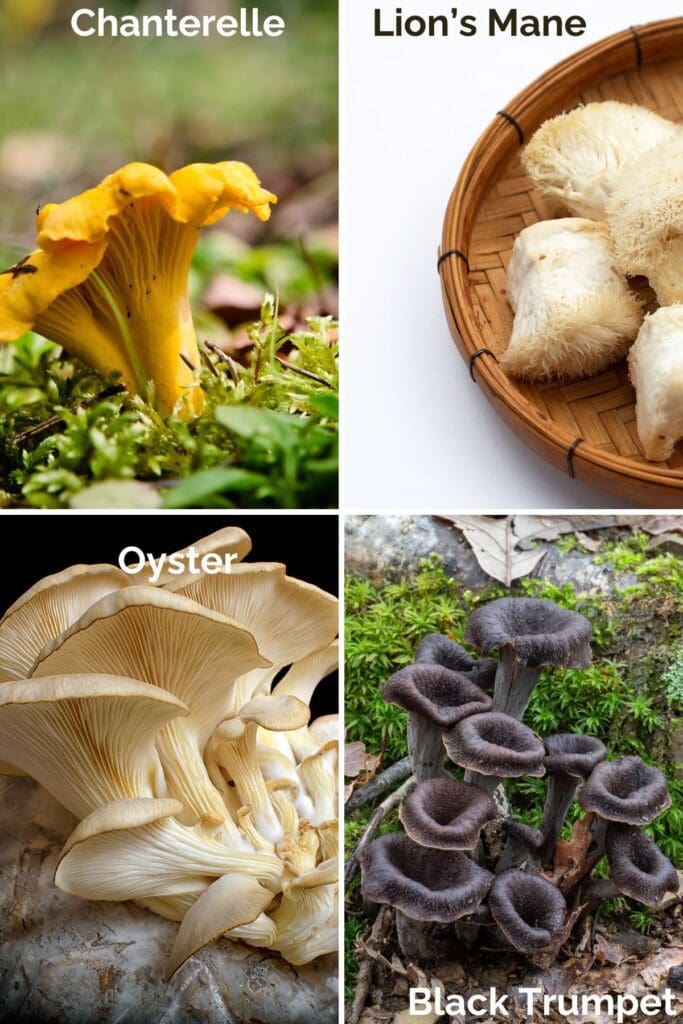
9. Chanterelle Mushrooms
Chanterelle mushrooms are known for their golden color and delicate flavor. These wild mushrooms have a fruity aroma and are commonly foraged in forests.
They work wonderfully in pasta dishes or sautéed with butter and herbs. Because of their delicate flavor, it’s best not to overpower chanterelles with too many strong ingredients. They’re often used in French cuisine and paired with mild flavors to let their unique taste shine.
10. Lion’s Mane Mushrooms
Lion’s mane mushrooms, with their shaggy appearance, are unlike any other mushroom. They have a meaty texture and are often used as a meat substitute in plant-based dishes.
Lion’s mane has potential cognitive health benefits, making it a popular addition to diets focused on brain health. When sautéed in olive oil, they develop a rich, savory flavor, and their meaty texture is perfect for recipes requiring substance.
11. Oyster Mushrooms (King Oyster and Blue Oyster)
Oyster mushrooms come in various forms, including king oyster and blue oyster varieties. King oyster mushrooms have a thick stem and a mild flavor, perfect for grilling or roasting. While blue oyster mushrooms are smaller with a more delicate flavor.
Both types of mushrooms are commonly used in Asian cuisine and are known for their versatility. King oyster mushrooms, or king trumpets, are often sliced into “scallops” and seared for a vegan alternative to seafood dishes.
12. Black Trumpet Mushrooms
Black trumpet mushrooms are sometimes referred to as “the poor man’s truffle” due to their deep, rich flavor. These mushrooms have an earthy taste and a chewy texture, making them a unique addition to gourmet recipes.
Black trumpets are often used in sauces and pastas, providing a bold flavor that enhances the dish.
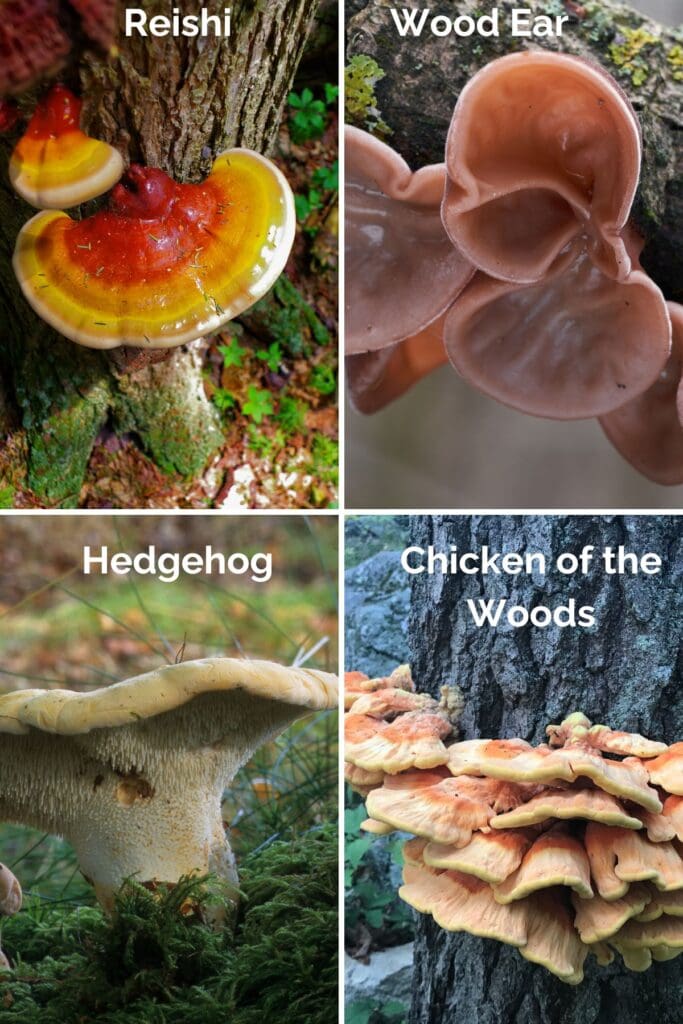
13. Reishi Mushrooms
Reishi mushrooms are more commonly known for their medicinal properties than for their culinary uses. Revered in East Asia, these mushrooms are used in teas and supplements for their potential health benefits, including supporting immune function and overall wellness.
While they’re not typically used in everyday cooking, reishi mushrooms are worth noting for their holistic health applications.
14. Wood Ear Mushrooms
Wood ear mushrooms have a crunchy texture and are frequently used in Asian cuisine, particularly in soups and stir-fries. Their ability to absorb flavors makes them a great addition to broths and sauces. Although their flavor is mild, their texture is the highlight, adding a fun twist to dishes like hot and sour soup.
15. Hedgehog Mushrooms
Named for their spiky gills, hedgehog mushrooms are a wild variety with a firm texture and mild flavor. These mushrooms can be foraged in the late summer and are excellent when sautéed with a little olive oil and garlic. They pair beautifully with hearty dishes like risottos or roasted meats.
16. Chicken of the Woods Mushrooms
As the name suggests, chicken of the woods mushrooms have a texture similar to cooked chicken. Their bright orange color makes them easy to spot, and their meaty texture makes them a fantastic substitute for chicken in vegetarian dishes.
Sautéed with garlic and olive oil, they’re perfect for pasta dishes or served alongside grains for a protein-packed meal.
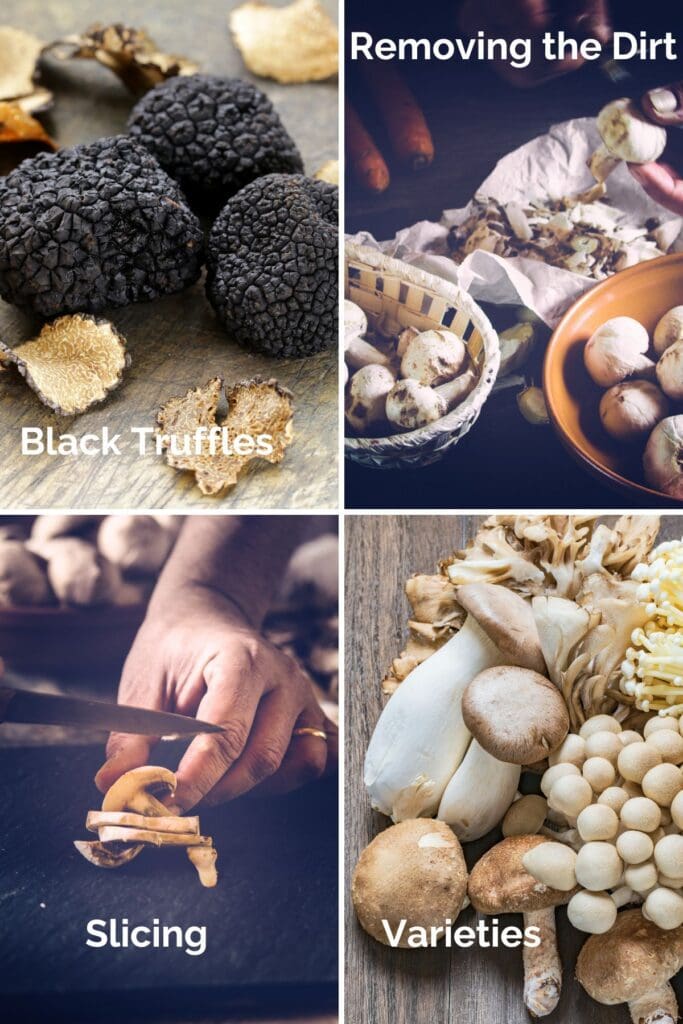
17. Truffles (Black Truffles)
No list of gourmet mushrooms would be complete without mentioning black truffles. Although technically a type of fungus, truffles are considered a delicacy around the world.
With their pungent aroma and intense flavor, shave over pasta dishes or infused into oils. Truffles are prized for their rarity and luxurious culinary uses, and they provide a unique umami flavor that is unmatched by any other type of mushroom.
How to Choose the Best Mushroom?
Choosing the best mushrooms is essential to ensure optimal flavor, texture, and overall quality for your dishes. Here are some tips to help you pick the freshest and most delicious mushrooms, whether you’re shopping at a grocery store, farmers market, or foraging in the wild:
Check for Freshness
When selecting mushrooms, look for ones that appear firm, plump, and dry to the touch, but not dried out. Mushrooms should not feel slimy or damp, as this can be a sign of spoilage.
White Button, Cremini, and Portobello Mushrooms. The caps should be smooth and dry, with a firm texture. Avoid any that have dark spots, wrinkles, or a sticky surface.
Wild Mushrooms (Chanterelle, Morel, Porcini). Wild mushrooms should have a firm texture without soft, mushy spots. Gills under the caps should be intact and free from mold or excessive moisture.
Look for a Rich Color
The color of a mushroom can indicate its freshness and flavor intensity:
Brown Mushrooms (Cremini, Portobello). These mushrooms, also known as baby bellas, should have a deep brown color. Lighter, faded mushrooms may be past their prime and can lack flavor.
Shiitake and Maitake Mushrooms. These mushrooms should have rich brown or tan caps. A slight sheen is okay. Stay clear of any with discolored spots or bruises.
Look at the Texture
Fresh mushrooms should have a pleasant and firm texture.
Mushrooms like king oyster or lion’s mane should feel dense and heavy for their size, with no soft spots or crumbling edges.
For mushrooms with long stems, like enoki or king oyster, the stems should be firm and not frayed or dry. A brittle, hollow stem can be a sign of old mushrooms.
Stay Away From Slimy or Wrinkled Mushrooms
One of the easiest ways to spot old mushrooms is by their texture. Mushrooms that have started to go bad often become slimy, wet, or sticky to the touch.
They may also look shriveled or wrinkled, especially around the edges. These mushrooms have likely been sitting too long and will have lost both flavor and texture.
Smell for the Earthy Aroma
Fresh mushrooms should smell earthy and mild. If you notice any off-putting or sour smells, the mushrooms are likely past their prime. This is particularly important for wild mushrooms, which should have a strong, clean, earthy aroma.
Check the Gills
For mushrooms with exposed gills, like the portobello, shiitake, or agaricus bisporus (white button mushrooms), make sure the gills are intact and not damaged or mushy.
Fresh mushrooms will have gills that are firm and evenly spaced, with no signs of discoloration or mold.
Choose Whole Mushrooms When Possible
Whole mushrooms tend to last longer than pre-sliced varieties.
When you buy whole mushrooms, you can inspect them more closely and ensure they are fresh. Pre-sliced mushrooms are more prone to moisture loss and spoilage, which can lead to a lack of flavor and texture.
Take Precautions When Foraging
If you’re foraging for wild mushrooms like chanterelles, morels, or black trumpets, it’s important to do so under expert guidance to ensure the mushrooms are safe to eat.
Many mushrooms look similar to poisonous varieties, so identifying them correctly is critical.
Foraging is best done in the late summer to fall, particularly after rain, when mushrooms are most abundant.
Buy from Reputable Sources
Whether you’re shopping at your local grocery store or a farmers market, purchasing mushrooms from a reputable source ensures better quality.
Farmers markets are great places to find wild mushrooms, which often have more robust flavors than cultivated varieties. Look for vendors who specialize in mushrooms and can offer advice on how to cook and store them.
How to Store Mushrooms Properly
Once you’ve chosen your mushrooms, proper storage is key to maintaining their freshness. Place them in a paper bag (avoid plastic) to allow air circulation and prevent them from becoming slimy. Keep them in the fridge, where they’ll last for up to a week depending on the type of mushroom.
What is the Best Way to Cook Mushrooms?
Not all mushrooms share the same cooking technique. Each type of mushroom has a unique texture, flavor, and moisture content. Each has its own preparation and cooking method for best results.
Here’s an overview of cooking techniques based on the characteristics of different types of mushrooms.
Mushrooms with High Moisture Content
Mushrooms like white button, cremini, and portobello have higher water content, which means they tend to release a lot of moisture when cooked. Here’s how to handle them.
Sautéing. White button and cremini mushrooms are commonly sautéed in a hot pan with olive oil or butter. The key is to give them enough time to release and evaporate their water so they brown and develop a rich, savory flavor.
Grilling or Roasting. Portobello mushrooms, with their large caps and firm texture, are ideal for grilling or roasting. Grilling brings out a meaty, smoky flavor, while roasting intensifies their earthy richness. They are often used as a meat substitute in sandwiches or burgers.
Delicate Mushrooms
Varieties like chanterelle, morel, and hedgehog mushrooms have delicate flavors. Treat gently to preserve their unique tastes.
Sautéing in Butter. These wild mushrooms are best when lightly sautéed in butter with a pinch of salt and some fresh herbs. Since their flavor is more subtle, avoid using strong spices or sauces that could overpower their natural taste.
Avoid Overcooking. Delicate mushrooms can become rubbery or lose their characteristic texture if overcooked. A quick sauté or light roasting is typically enough to bring out their best qualities.
Firm and Meaty Mushrooms
Varieties like shiitake, maitake, and king oyster mushrooms have a dense, meaty texture that holds up well in various cooking methods.
Searing or Stir-Frying. These mushrooms benefit from high-heat cooking methods, such as searing or stir-frying. Shiitake and maitake mushrooms, in particular, develop a savory, umami flavor when cooked quickly over high heat with a little oil.
Grilling or Roasting. King oyster mushrooms, with their long stems and firm texture, are often grilled or roasted. Slicing them thick and searing them on both sides creates a hearty, almost meaty bite that works well in vegan or vegetarian dishes.
Mushrooms Used in Broths or Soups
Use mushrooms like enoki, wood ear, and reishi in soups due to their unique textures and mild flavors.
Add to Broths. Enoki mushrooms are known for their long, thin stems and are often added to Asian soups, like ramen, just before serving. They don’t require much cooking, so they are perfect for tossing into hot broth where they retain some of their crunch.
Steeping. Reishi mushrooms are known more for their medicinal qualities and are typically simmered in water to create teas or health tonics rather than being cooked in everyday meals.
Drying and Rehydrating Mushrooms
Varieties like porcini, black trumpet, and shiitake are often dried and used to add deep, rich flavor to broths, soups, and sauces.
Rehydrating. Dried mushrooms should be rehydrated by soaking them in warm water for 15-30 minutes before using. The soaking liquid becomes flavorful, so you can also incorporate it into your recipe.
Simmering. These mushrooms are perfect for slow-cooked dishes like risottos or sauces where their intense, earthy flavors can infuse the entire dish.
Mushrooms for Raw or Minimal Cooking
Eat raw or with minimal cooking some types, like lion’s mane and morel mushrooms.
Raw. Lion’s mane mushrooms are sometimes eaten raw in salads, and their texture resembles crab or lobster. However, they can also be lightly sautéed to develop more flavor without losing their unique texture.
Quick Cooking. Morel mushrooms, due to their sponge-like texture, soak up flavors quickly. A fast sauté in butter is usually all it takes to enjoy them.
Marinating or Pickling
Pickle or Marinate types like shiitake, button, or even oyster mushrooms for more flavor.
Marinating. Marinating mushrooms in olive oil, vinegar, herbs, and spices brings out their flavors while giving them a longer shelf life. This technique works well for smaller mushrooms like button or cremini, which can then be served as appetizers or in salads.
Grating and Slicing
Mushrooms like truffles or reishi require special handling.
Truffles. Shave thinly over dishes like pasta or eggs to add a luxurious, umami-packed flavor.
Reishi. Typically grated and steeped in liquids like tea, reishi mushrooms aren’t used for their flavor in dishes but for their medicinal qualities.
Overall, while there are some similarities like sautéing or roasting, each mushroom type has its preferred method of cooking based on its texture and flavor profile. Choosing the right cooking technique can make all the difference in bringing out the best of these edible treasures!
Whether you’re browsing your local grocery store or hunting through farmers markets, mushrooms offer endless possibilities in the kitchen.
With such a variety of mushrooms to explore. From the common white button mushroom to exotic varieties like maitake and lion’s mane, you can find something to suit any dish.
The next time you’re looking for a fun addition to your meal, try experimenting with different mushrooms. They’re not only a great way to enhance the flavor of your dishes but also come with health benefits that make them a nutritious choice.
References
Country Living. 16 Common Types of Mushrooms and How to Cook with Them.
The Pioneer Woman. The 10 Best Types of Mushrooms for Soups, Stir-Fries and More.
